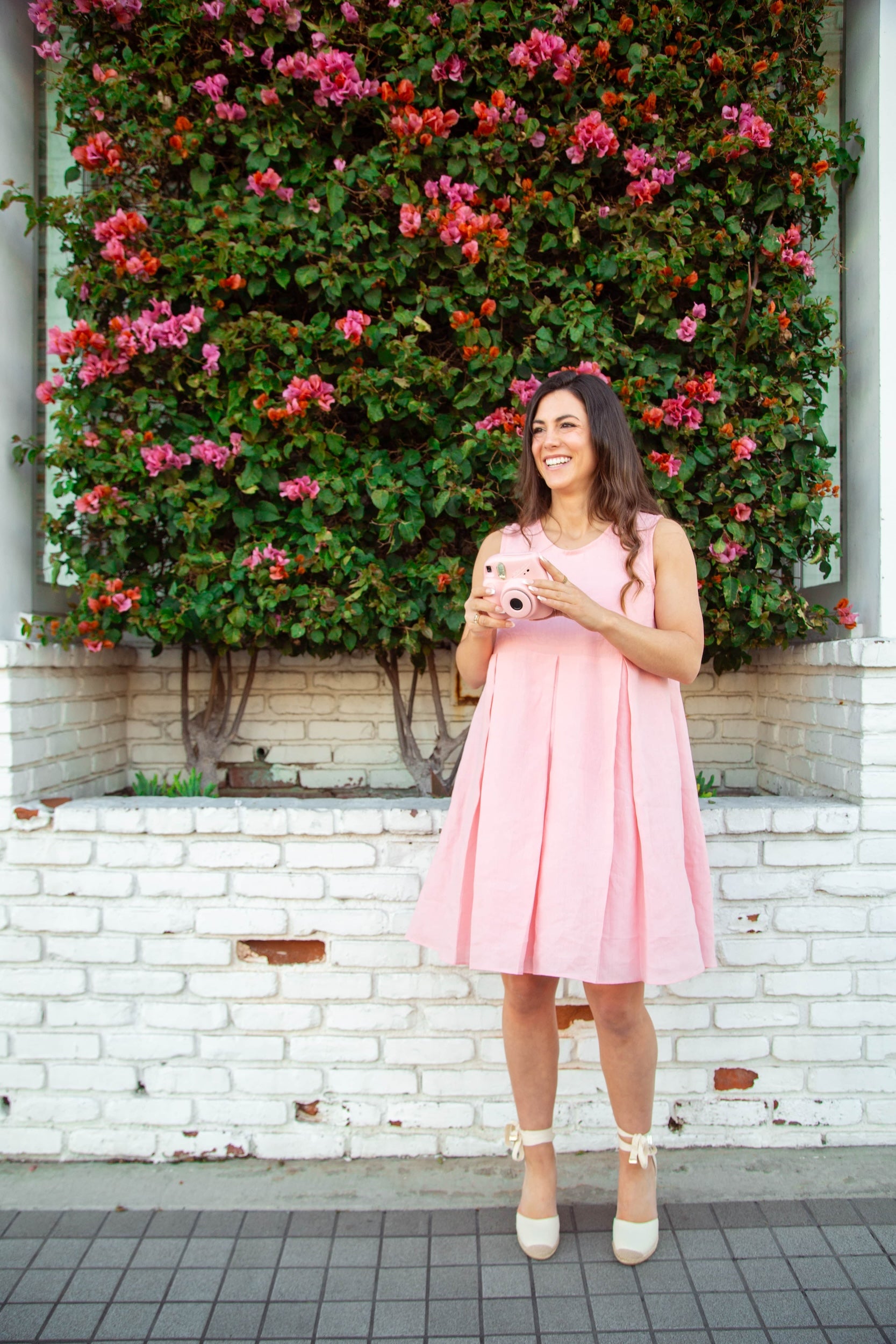Fashion Drawing for Beginners Part 2

Hi everyone, this is part 2 of fashion drawing for beginners. For those of you who have not seen or read part 1 yet, click here. Please refer to the video at the bottom of this page to follow along with visuals.
We are going to start right away by reviewing the proportions of the fashion figure. You can use a ruler to draw your center line and the 9 marks, equal distant from each other. Feel free to label each mark 1-9.

The head goes at the top, 9 times of the head is the full body. The neck is half a head. The shoulder width is one and a half heads. The armholes are a ½ head wide.
At 3 heads, you have the waist. Coming from the waist, you have what’s called the ilium, which is the point at the top of the pelvis. This is where the woman’s hips differ from the mans.
At 4 is the fullest part of the hips, which should have a width even with the shoulders. The crotch is just below that.
The first half of the arm ends at the waist at 3 and the lower half ends at the hips at 4. The hand extends to about ¾ of a head. The knees are at 6.
The ankles are at about 9. The feet are about the length of the head.
The eyes are at about half the face.
Now we will add curves and muscles to show a more realistic figure. I’ll be going over the proportions in black so you can see the difference.
Muscles will give a fleshed out rounded look to the croquis and how large they are drawn is a matter of preference. Usually in fashion drawing, minimal musculature is indicated. The “look” is long and lean.
Anatomical detail is not necessary (at least compared to something like a medical drawing); however, it is appropriate and attractive to add details like the scapula or collar bone, the fullness of the bust, the shape of the ribcage, softness of the tummy, and angularity of the knee. These are achieved by drawing them in and shading, which I will go over in another video later.
Let’s begin. I will put the proportions I just drew underneath the new drawing. The new drawing will be on tracing paper.
To start, we can draw in the ears, which are even with the eyes at half the face.
There are muscles at the neck and the collarbone, which extend from the base of the neck to the collarbone.
We can make sure the shoulders are rounded with circles. And the armholes are drawn in with a slight slant inwards. They are a half a head long.
The apex - or the nipple to be frank- of the bust is at 2 and each point is equal distance from the centerline. It dips down to 2 ½ heads
We can also draw in the curve of the ribcage here. And mark the crotch at 4 ½.
You can draw in the knee, making sure to taper in at 6. It sort of sticks out a little on the inside and dips in on the outside. They should be about ½ head wide.
The muscles on the upper arms, forearms, and legs are longer on the outside edges of the body than on the outside.
At 7 we can draw in the calf muscle on the inside and outside, which I like to draw a little wider than the knee.
The inside ankle at 9 is slightly higher than the outside ankle. If you put the ankle slightly above 9, it gives the figure a sportier, younger look. And you can draw in the feet with a curve. If you have trouble, try making a triangle.

So you can see both drawing side by side and how the details are helping develop and bring the figure to life.
That’s it for today. Next fashion drawing video/blog I will go over the back view of the croquis. In the meantime I highly suggest practicing. Get in the routine of drawing two figures per day, everyday to start developing your hand.
Thanks for following along, and have a great day!
Watch the full YouTube video here:
What to watch next?
Here is part 1 of Fashion Drawing for Beginners. If you haven’t seen my video or read my blog on where inspiration comes from you can click here. You can watch my video and read my blog on how to make a mood board here. Stay tuned for my next blog/video: Iconic Looks and Why They Made History!
Follow me on:





